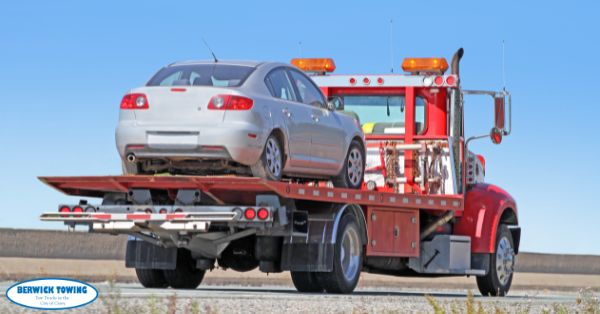All-wheel-drives are popular with car buyers due to their extra traction in various terrains and weather conditions. However, towing an all-wheel-drive can be a little more complicated compared to towing other vehicles. We will discuss the reasons and what you can do to tow the all-wheel-drive safely.
What is an All-Wheel-Drive
Before getting into details, first we will distinguish an all-wheel-drive (AWD) and a four-wheel-drive (4WD). An all-wheel-drive system. All-wheel-drives are optimized and geared for on-road usage. Their systems will use the front and rear differentials with an electronic or viscous coupling to split the power between each axle and individual wheels. Most all-wheel-drives are engaged permanently to different degrees, thus disengaging them without removing the driveshaft is almost impossible.
On the other hand, four-wheel-drives are typically optimized for off-road usage. A full-time four-wheel-drive system will work similarly to all-wheel-drive, as it enables drivers to keep the wheels engaged. A part-time four-wheel-drive can let drivers disengage all four wheels at lower speeds manually. Most four-wheel-drives also have front and rear differentials, they also have transfer cases that can engage the rear and/or front axles.
Issues Involved When Towing All-Wheel-Drives
When towing a vehicle on two wheels, the common practice is not to tow the drive wheels. Towing the vehicle by drive wheels will result in damage to the transmission, even when the vehicle is left in neutral. Towing front-wheel-drive vehicles (FWD) will involve moving the car with the rear pair of wheels put onto the ground. On the other hand, towing rear-wheel-drive (RWD) means towing the vehicle with the front pair of wheels on the ground, the steering must be locked for safety purpose. The driveshaft of the rear-wheel-drive should also be removed if the rear wheels on the ground.
For an all-wheel-drive vehicle, no wheels should be left on the ground; this is because the wheels are permanently engaged. If towing is done with a pair of wheels on the road, it can lead to damage to the transmission, the coupling, and other components of the vehicle.
How to Tow All-Wheel-Drives Safely
When towing all-wheel-drive vehicles, the safest way is to keep the wheels off the road. This is possible using a flatbed tow truck. Flatbed towing the all-wheel-drive is the most secure and efficient option of moving these vehicles without causing significant damage to the drivetrain. If flatbed tow trucks are not available, towing companies will substitute the towing using tow dollies to perform the duty.
When flatbed tow trucks or trailers aren’t available, many tow truck and crane services resort to tow dollies to transport AWD vehicles while keeping their wheels above ground. Tow dollies have of inline pair of small wheels attached to a metal frame. The frame is put against the tires, and the two pairs of wheels linked with a set of aluminum axles. The wheels are put onto the tow dollies. The tow dollies cradle the wheels between the axles and keep them off from the ground.
By using flatbed towing or tow dollies, the all-wheel-drives can be transported safely, as they can minimize the risks of damage to the drivetrain of the vehicle.
Conclusion
Thus, when towing vehicles, precautions should be taken before to prevent damages. There are different towing methods, so the towing company needs to determine the most appropriate option for the towing requests. All-wheel-drives do need more care, but they can be moved with the right tow truck and equipment.
Affordable Towing Services Company in Melbourne South Eastern Suburbs.
Berwick Towing & Transport located near the Springvale, Victoria 3171 Please check below map.
Berwick Towing & Transport
27B William Rd
Berwick VIC 3806
https://berwick-towing.com.au/
* Find us on Google Map

